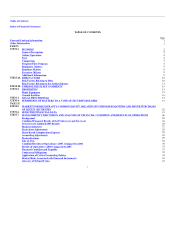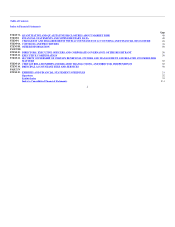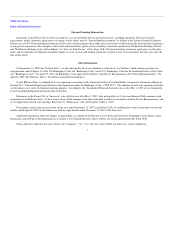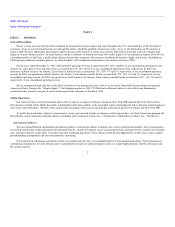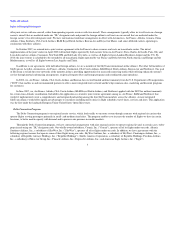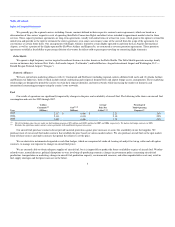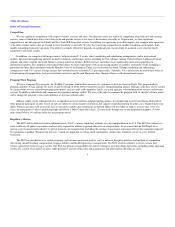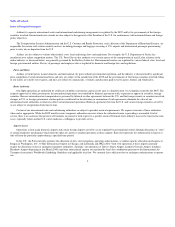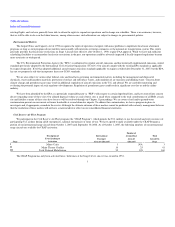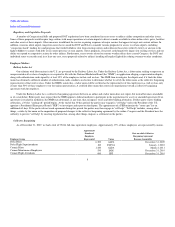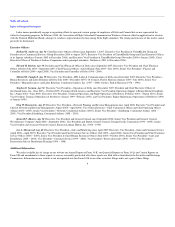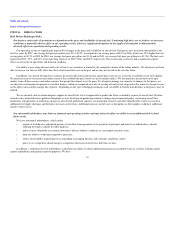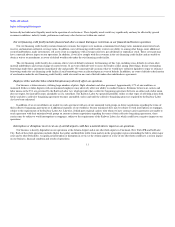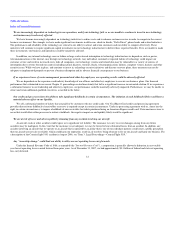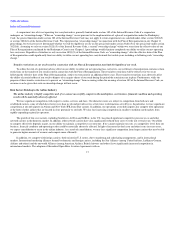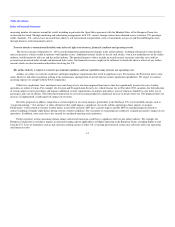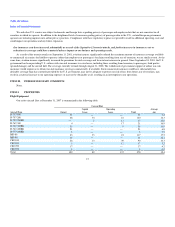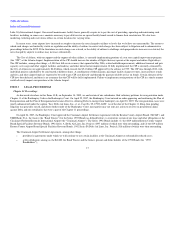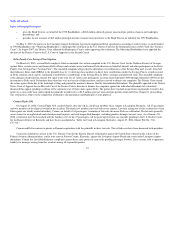Delta Airlines 2007 Annual Report Download - page 13
Download and view the complete annual report
Please find page 13 of the 2007 Delta Airlines annual report below. You can navigate through the pages in the report by either clicking on the pages listed below, or by using the keyword search tool below to find specific information within the annual report.
Table of Contents
Index to Financial Statements
Regulatory and Legislative Proposals
A number of Congressional bills and proposed DOT regulations have been considered in recent years to address airline competition and other issues.
Some of these proposals would require large airlines with major operations at certain airports to divest or make available to other airlines slots, gates, facilities
and other assets at those airports. Other measures would limit the service or pricing responses of major carriers that appear to target new entrant airlines. In
addition, concerns about airport congestion issues have caused the DOT and FAA to consider various proposals for access to certain airports, including
"congestion-based" landing fees and programs that would withdraw slots from existing carriers and reallocate those slots (either by lottery or auction to the
highest bidder) to carriers with little or no current presence at such airports. These proposals, if enacted, could negatively impact our existing services and our
ability to respond to competitive actions by other airlines. Furthermore, recent events related to extreme weather delays have caused Congress, the DOT and
individual states to consider and, in at least one case, enact proposals related to airlines' handling of lengthy flight delays during extreme weather conditions.
Employee Matters
Railway Labor Act
Our relations with labor unions in the U.S. are governed by the Railway Labor Act. Under the Railway Labor Act, a labor union seeking to represent an
unrepresented craft or class of employees is required to file with the National Mediation Board (the "NMB") an application alleging a representation dispute,
along with authorization cards signed by at least 35% of the employees in that craft or class. The NMB then investigates the dispute and, if it finds the labor
union has obtained a sufficient number of authorization cards, conducts an election to determine whether to certify the labor union as the collective bargaining
representative of that craft or class. Under the NMB's usual rules, a labor union will be certified as the representative of the employees in a craft or class only
if more than 50% of those employees vote for union representation. A certified labor union then enters into negotiations toward a collective bargaining
agreement with the employer.
Under the Railway Labor Act, a collective bargaining agreement between an airline and a labor union does not expire, but instead becomes amendable
as of a stated date. Either party may request that the NMB appoint a federal mediator to participate in the negotiations for a new or amended agreement. If no
agreement is reached in mediation, the NMB may determine, at any time, that an impasse exists and offer binding arbitration. If either party rejects binding
arbitration, a 30-day "cooling off" period begins. At the end of this 30-day period, the parties may engage in "self help," unless the President of the U.S.
appoints a Presidential Emergency Board ("PEB") to investigate and report on the dispute. The appointment of a PEB maintains the "status quo" for an
additional 60 days. If the parties do not reach agreement during this period, the parties may then engage in "self help." "Self help" includes, among other
things, a strike by the union or the imposition of proposed changes to the collective bargaining agreement by the airline. Congress and the President have the
authority to prevent "self help" by enacting legislation that, among other things, imposes a settlement on the parties.
Collective Bargaining
As of December 31, 2007, we had a total of 55,044 full-time equivalent employees. Approximately 17% of these employees are represented by unions.
Employee Group
Approximate
Number of
Employees
Represented Union
Date on which Collective
Bargaining Agreement
Becomes Amendable
Delta Pilots 6,300 ALPA December 31, 2009
Delta Flight Superintendents 180 PAFCA January 1, 2010
Comair Pilots 1,440 ALPA March 2, 2011
Comair Maintenance Employees 530 IAM December 31, 2010
Comair Flight Attendants 980 IBT December 31, 2010
8



